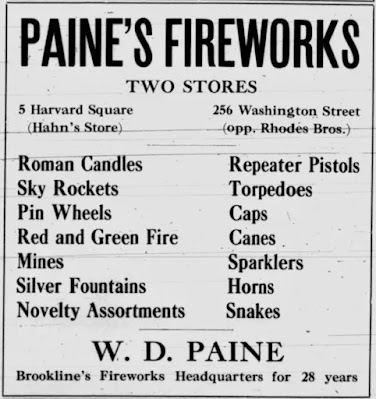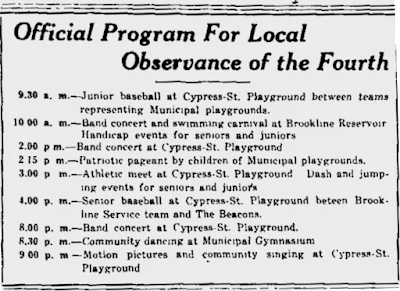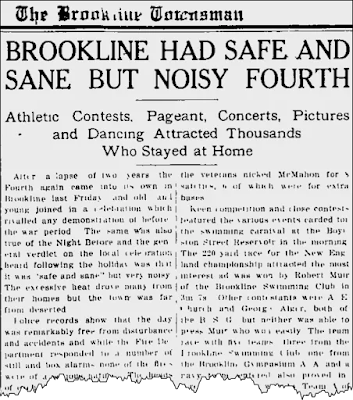Independence Day 1919 came eight months after the end of fighting in the World War and just six days after the official signing of the Treaty of Versailles. That sequence of events, said the Brookline Chronicle, "has made this day doubly significant and will probably be observed most enthusiastically."
 |
| This advertisement appeared in the Brookline Chronicle on June 28, 1919 |
At the same time, the paper offered advice on keeping the celebration "safe and sane."
"While it is laudable that this day should be observed fully," continued the paper, "it is particularly important that it should be observed sanely. Noise is not an evidence of patriotism nor fireworks of allegiance; and the communities where the day is observed by parades, games, public speaking, etc. rather than by fireworks and noise, will probably at the end of the day be the happier communities."
The Chronicle carried a long list of regulations governing fireworks. These included prohibitions against sales to children under 13 and against setting off certain fireworks on public streets or within 300 feet of a hospital. There were also regulations governing the size of various fireworks and proximity to spectators, as well as the hours they could be set off.
"Those persons who feel that fireworks are necessary on that day should use the utmost care in the handling of them," continued the Chronicle, "to the end that neither life nor property shall be destroyed and that this day which should be one of rejoicing is not marred and homes made desolate because of accidents and fires resulting from the use thereof."
In the end, a day full of official events -- as well as fireworks -- went off without incident.
 |
| Brookline Townsman, June 28, 1919 |
 |
| Brookline Townsman, July 12, 1919 |